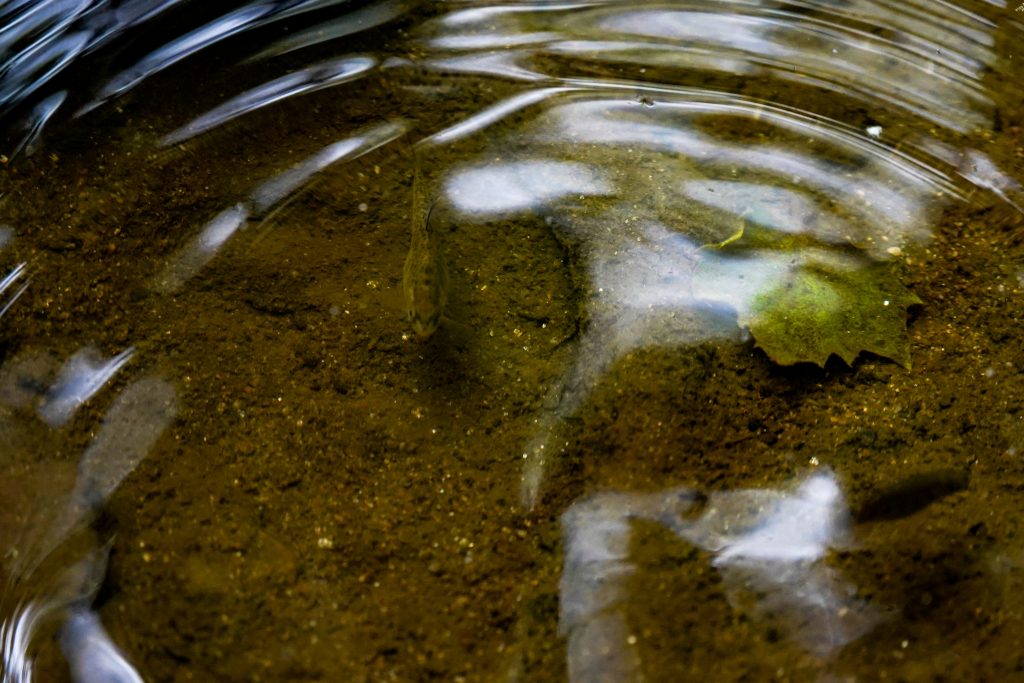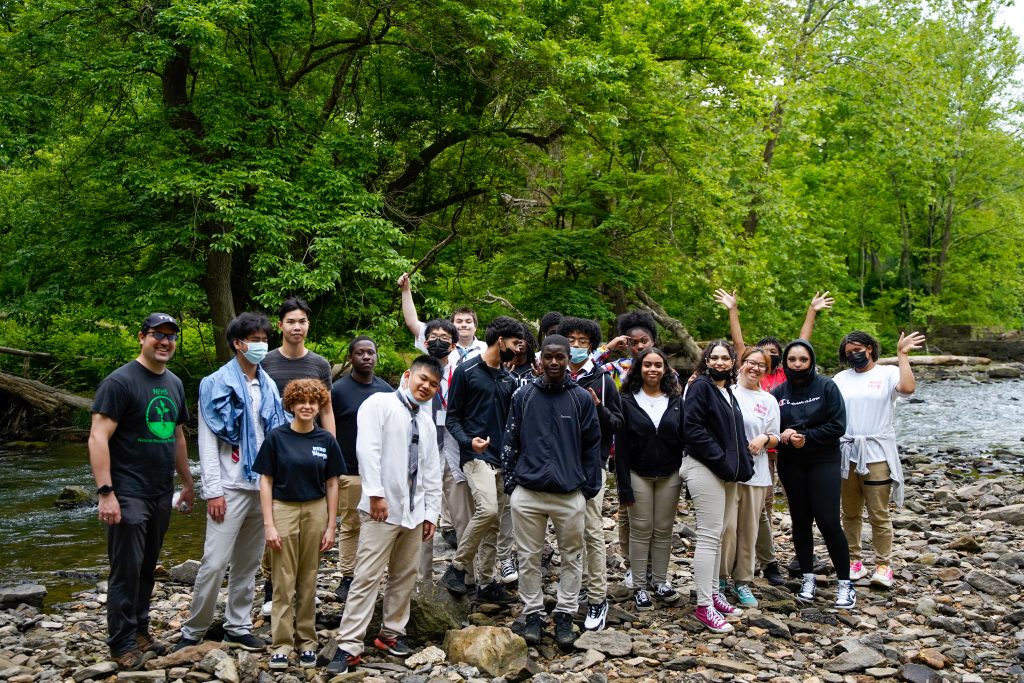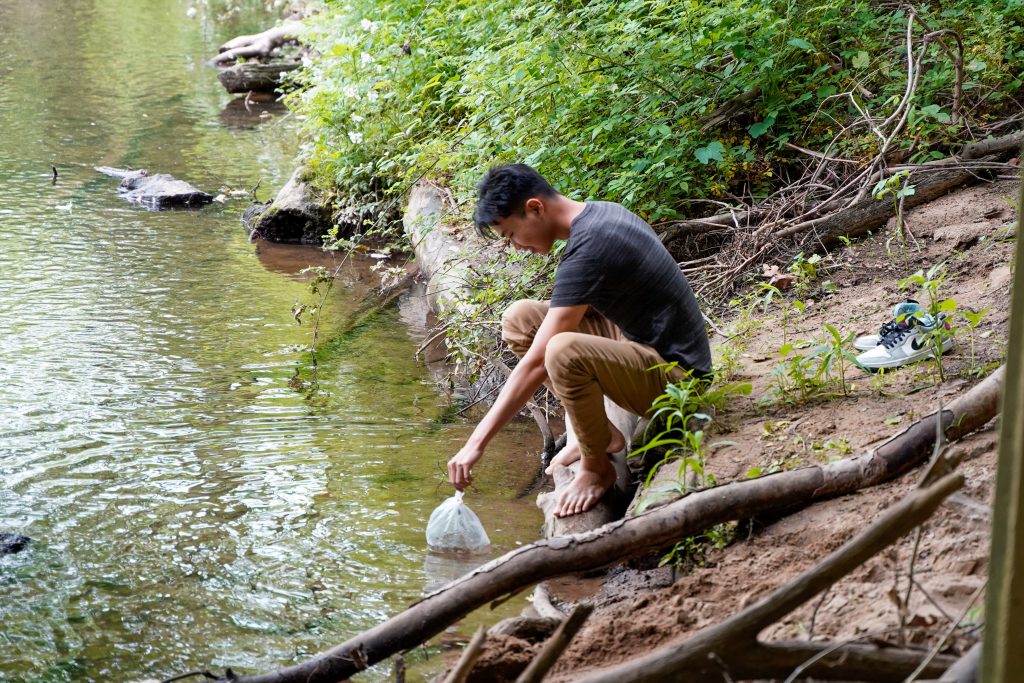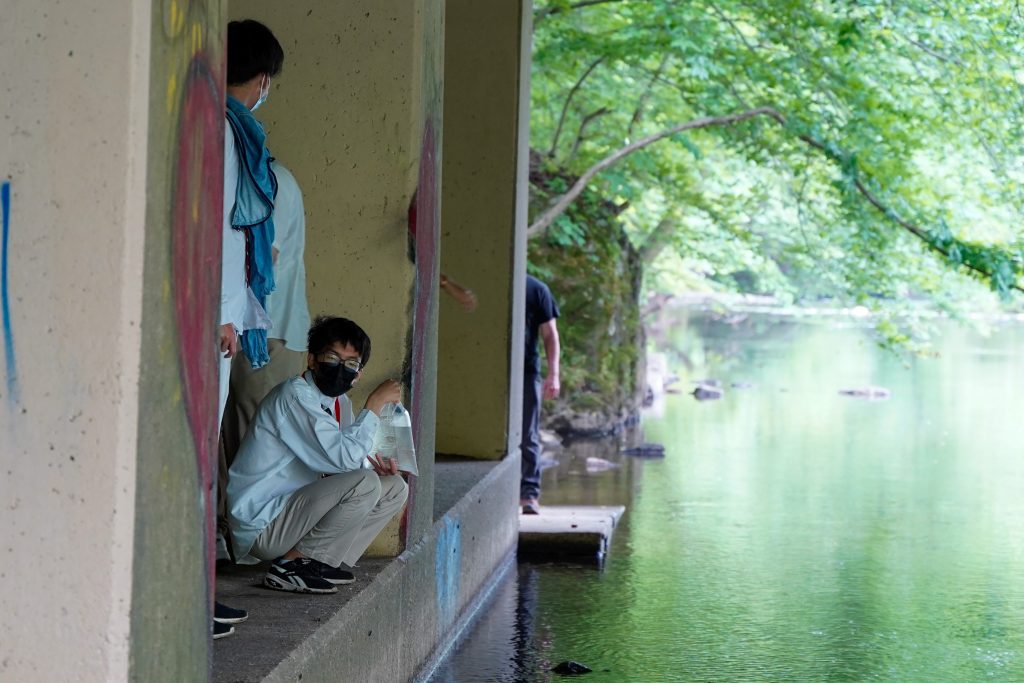



Students of Northeast High School Environmental Science teacher Matthew Scanlan finished out their school year by releasing the trout they raised into Pennypack Creek.
Scanlan got the trout eggs in November from the PA Fish and Boat Commission’s “Trout in the Classroom” initiative. Seniors in the Natural Resource Management program at NEHS raised the fish until the end of the school year.
“My favorite part of this project is always the day we receive all the eggs. The class is always amazed at how small they are and how many there are,” Scanlan said.
Every day, students visited the trout in their 55-gallon tank, documenting how many eggs were still viable, and once hatched, how many trout were able to survive. They also documented water quality and fed the fish twice per day until they were old enough to feed once a day.
“The benefits of the program is to teach students the life cycle of the trout, the importance of maintaining the PA watersheds, and to improve the life diversity of the freshwater rivers, creeks and streams in Pennsylvania,” Scanlan said.
The class had permission to release the trout into Pennypack Creek between mid-May and mid-June.
“My students were very excited and sad at the same time,” Scanlan said. “They kept telling me we raised them sheltered and were releasing them into the unknown.”
Though it was hard to say goodbye, Scanlan’s students learned about population growth and used the trout as a teaching tool throughout the school year.
“My students enjoyed the experience and became connected to their trout. They would become sad when they would find a fish had passed and had to remove it. They learned the reason why organisms, like fish, release so many eggs and reproduce in such high numbers,” Scanlan said.
This was Scanlan’s second time raising trout with his class, and he plans to continue the tradition next year because he believes in the benefits of hands-on learning.
“Project-based instruction emphasizes the conservation, protection and responsible human interactions with a range of natural resources, including the air, forests, soil, water, fish, plants and wildlife,” Scanlan said.





